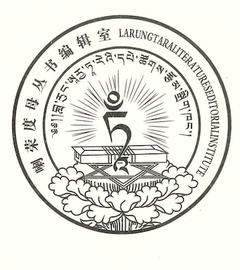Young Lady Wu
Young Lady Wu[1]
from the Ḍākinīs' Great Dharma Treasury
During the Ming Dynasty, a girl was born into the Wu clan and immediately placed her legs into the vajra posture. From the time she was little, she had immense devotion to the holy and divine Dharma, love for her parents, upstanding character, and sharp intelligence.
When she entered adolescence, her parents and others sought a husband for her, but she had turned away from the saṃsāric world and didn’t want anything to do with the life of a housewife.
Whenever her elder and younger brothers were reading, she would look over their shoulders, and in this way learned to read without any great trouble. Once she could read, she recited scriptures every day, understanding most of their meaning, and she constantly paid homage to the buddhas.
One night in her dreams, a deity taught her the dhāraṇī mantra of Avalokiteśvara (Guanyin). Subsequently, she recited that dhāraṇī mantra intensively, to the point that she could use it to treat people’s illnesses, even intractable ones.
Another night in her dreams, she gained the power to remember her past lives. She recalled that in the earlier Song Dynasty, she had been a Dharma practitioner, and she understood that she had come to this life in order to repay the kindness of her former parents.
When she was twenty-three years old, she reached the level of an ārya.[2] Not long after that, she passed away.
When her mother performed her funeral rites, she sensed a pleasant fragrance emanating from her corpse, which gradually suffused the room, house, courtyard, and entire region.
After four years, her body was finally cremated. The crown of her skull was not burned and had transformed into a luminous, jade-like stone, which inspired wonder and devotion in all who saw it. Subsequently, devotees constructed a stūpa to house her skull.
This was translated from Chinese into Tibetan by Khenmo Dawa Drolma.
| Translated by Joseph McClellan, 2025.
Bibliography
Tibetan Source
mkhan mo zla ba sgrol ma, trans. “’bos tshang gi bu mo.” (2017). In mkhaʼ ʼgroʼi chos mdzod chen mo (Par gzhi dang poʼi par thengs dang po, Vol. 8, pp. 275–276). Bod ljongs bod yig dpe rnying dpe skrun khang. BDRC MW3CN2459_EFC55D
Version: 1.2-20250819
